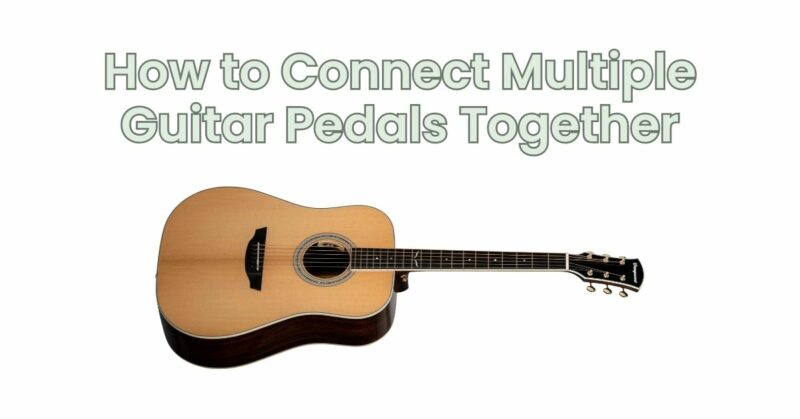Connecting multiple guitar pedals together is a great way to experiment with different sounds and create your own unique signature sound. By chaining together different effects pedals, you can create a wide variety of tones, from subtle overdrive to extreme distortion.
Here are the steps on how to connect multiple guitar pedals together:
- Choose the right patch cables. Patch cables are the cables that you will use to connect the pedals together. There are two main types of patch cables: straight and 90-degree. Straight patch cables are the most common type, and they are used to connect two pedals that are next to each other. 90-degree patch cables are used to connect two pedals that are not next to each other, and they allow you to save space on your pedalboard.
- Connect the pedals in series. When connecting multiple guitar pedals together, you will need to connect them in series. This means that the output of one pedal will be connected to the input of the next pedal, and so on. The first pedal in the chain should be connected to your guitar, and the last pedal in the chain should be connected to your amp.
- Power the pedals. Most guitar pedals require power to operate. There are two main ways to power guitar pedals: batteries and power supplies. Batteries are the most common way to power pedals, but they can be inconvenient to change. Power supplies are a more convenient way to power pedals, and they can also provide more power to pedals that require it.
- Experiment with different settings. Once you have connected your pedals together, you can start experimenting with different settings. Each pedal has a variety of settings that you can adjust, and these settings will affect the sound of the pedal. By experimenting with different settings, you can find the perfect settings for your own unique sound.
Here are some tips for connecting multiple guitar pedals together:
- Use high-quality patch cables. Cheap patch cables can cause noise and interference, so it is important to use high-quality cables.
- Use a power supply to power your pedals. Batteries can be inconvenient to change, so it is a good idea to use a power supply to power your pedals.
- Experiment with different settings. Each pedal has a variety of settings that you can adjust, so experiment with different settings to find the perfect sound for you.
- Use a pedalboard to organize your pedals. A pedalboard can help you to keep your pedals organized and make it easy to connect them together.
By following these steps, you can connect multiple guitar pedals together and start experimenting with different sounds. With a little practice, you will be able to create your own unique signature sound.


